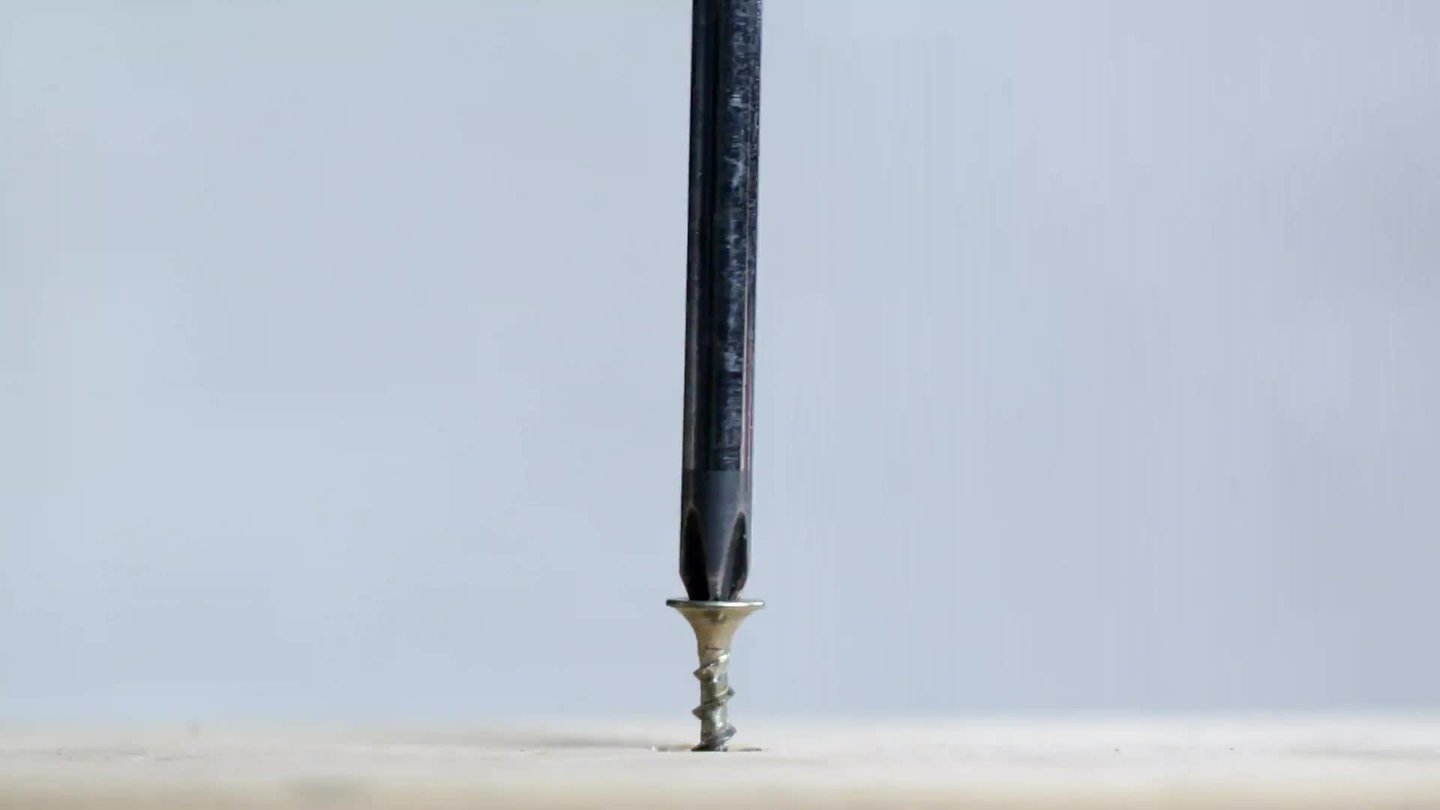Problem
Youandafriendarehelpingtobuildahouseforyourdog,Ollie.Thewoodenboardsarecut.Theholesaredrilled.Allyouhavetodoisconnecttheboardstotheframe.Yougrabascrewdriverandsomescrewsandgoto work.
Thefirstturnofthescrewiseasyenough.Butthenitgetsharderandhardertoturn.Youholdthescrewdrivertighterandstraintoturnthescrew.Uhhhh! Grrrr!Afteraminuteofstruggling,thescrewisstillstickinghalfwayout.Ollietiltshishead.Hemustbewonderingifhisdoghousewilleverget finished.
Solution
Meanwhileyourfriendishavingamucheasiertime.Sheisalreadyputtinginherthirdscrew.“Hey,whyareyourscrewssoeasytoturn?”youaskwithatouchofjealousy.Shebeamsabigsmile.“IguessI’mjuststrongerthan you.”
“No,really.Our screwdriversarethesamesize.Theholesarethesamesize.Eventhescrewsarethesamesize.Sowhat’sthe difference?”
Thenyounoticeit.“Hey,lookatthis.Thethreadsare different.”
Theridges,orthreads,ofyourscrewaremuchfartherapartthanonthescrewsyourfriendisusing.Yourfriend’sscrewshavealotmorethreads,andtheyarereallyclosetogether.Thatmustbe it!
Youtryoneofthescrews.Youhavetoturnitalotmoretimes,buttheyareeasyturns.Thescrewgoesinfastandholdstheboardtighttotheframe.“That’smorelikeit!”youexclaim.“NowthatIhavetherighttools,we’llhavethisthingbuiltinno time.”
“AndIthinkOllieisgoingtolovehisnewhouse,”yourfriend adds.
Woof!Woof!Olliethinksso, too.

It's Simple
Whatmadethescrewssuchgoodtoolstoholdthewoodtogether?It’ssimple!Ascrewisasimplemachine.Likeallmachines,simplemachineshelpusdojobs,usuallybymovingthingsfaster,farther,ormoreeasilythanwecanwithoutthe machine.
Simplemachineshaveonlyafewparts.Infact,somearemadeofonlyonepart.Yet,nearlyeverymachinecontainsoneormoreofsimple machines.
Thinkaboutapairofgardenshears.Thesharpedgesofitstwobladesarewedges.Thebladesarealsolevers.Soisthehandle.Thepivotpointonwhichthebladesmoveisascrew.Otherscrewsholdtheparts together.
Simplemachinescanbecombinedinendlesswaystoaccomplishtasks,fromsharpeningapenciltorocketingintospace.Buteachsimplemachinealsohelpsusdoworkallonits own.
ACloserLook
Ascrewwithwiderspacesbetweenthreadswillrequiremoreforcebuttakelesstimeto move.


lessforce,more time
moreforce,less time
threads
Whenyouturnthescrewdriver,thescrewredirectstheforceforwardsoitgoesintothe wood.
TheTurnoftheScrew
Ascrewisaneatlittlemachine.Thoseridges,orthreads,thatcurlaroundareallconnected.Theyformasinglerampthatwrapsaroundarod.It’slikeatinyspiralslide.Thatspiraliswhatmakesascrewdoits job.
Thinkaboutwhathappenswhenyoutwistascrewintoapieceofwood.Youplacethetipofascrewdriverintotheslitinthetopofthescrew.Youturnthehandle.Thattakessomeeffort.Thiseffortprovidestheforceneededtodrivethescrewintothe wood.
Whenyouturnthescrewdriver,youdirecttheforceinacircle.Thescrewdrivertransfersthisforcetothescrew,whichalsomovesinacircle.Butthensomethingveryinterestinghappens.Thescrewchangesthedirectionoftheforce!Asthescrewturns,itchangesforcethatgoesroundandroundintoforcethatgoesstraight forward.
That’sthewholepointofascrew—itredirectsforce.Witheachturnofthescrewdriver,anotherthreadmovesforwardandcutsintothewood.Andoncethescrewisintight,itstaysthatway.Frictionbetweenthethreadsandthewoodholdthescrewwithafiercegripthat’shardtoloosen.So,canyouremoveascrew?Sure,butdon’ttrytopryitoutwiththeclawofa hammer.
Thewaytoremoveascrewistosimplyturnthescrewdriverintheoppositedirection.Thescrewchangesthecirculardirectionoftheforce.Exceptthistime,thescrewredirectstheforcestraightbackwardinsteadof forward.
